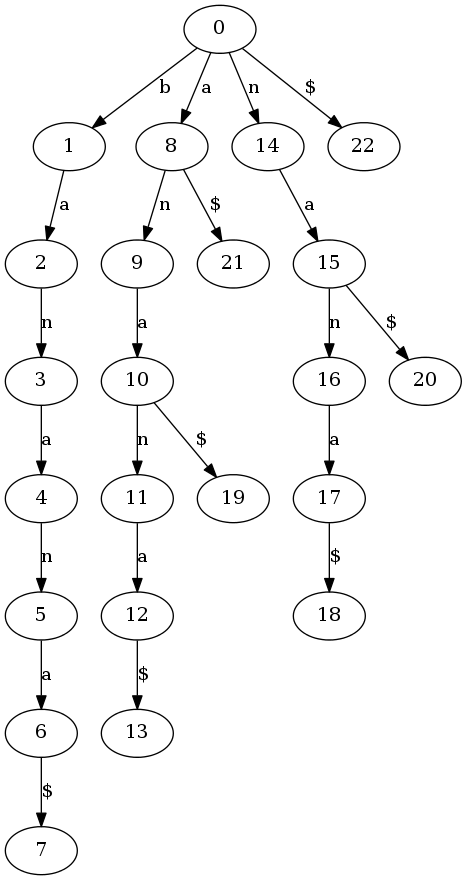Suffix Trees
Cole Lyman
25 October 2016
Suffix Trees
What is a Suffix Tree?
A suffix tree is a data sructure that contains each suffix of a string, a suffix is defined as the end part of a string. For example, the suffixes for the string banana are:
- a
- na
- ana
- nana
- anana
- banana
Notice that the entire string is also considered a suffix.
We can also include the empty string as a suffix, so in order to include the empty string we need to append a character that isn’t in the alphabet to the string.
We will assume that the character $ is not in the alphabet.
Our string is now banana$, and the suffixes are:
- $
- a$
- na$
- ana$
- nana$
- anana$
- banana$
How to Construct a Suffix Tree
The easiest way to understand how to construct a suffix tree is to first construct a suffix trie, then collapse nodes to convert the trie to a tree. Here is the graphical representation of the suffix trie:

Now we collapse the nodes that only have one child, and the resulting suffix tree is this:

How to Use a Suffix Tree
Observe that each suffix is represented in this structure.
This means that we can efficiently search for a suffix (or substring) by traversing the suffix tree.
For example if we were to search for the substring ana in the suffix tree for banana$, this would be the traversal path:
0 -> 2 -> 3
Note: We can stop at any node because we are searching for a substring rather than a suffix, if we were searching for a suffix, the search string would have been ana$.
Suffix Tree Construction
How would you create a naive algorithm to construct a suffix tree? You can easily create a simple algorithm to construct a suffix tree in , but Esko Ukkonen discovered a way to construct a suffix tree in O(n) (linear time).